Spreading across 44.06 sq. km, the Bura Chapori Wildlife Sanctuary is famous for being an ideal habitat for the Bengal florican. It is a haven for many migratory birds including the Great Indian one-horned rhinoceros, tiger, leopard, wild buffalo, hog deer, wild pig, elephants and fish. Burachapori Wildlife Sanctuary was first declared as a Reserved Forest in 1974. In 1995 it was declared as Bura Chapori Wildlife Sanctuary.
Geographically Bura Chapori Wildlife Sanctuary is part of the Laokhowa-Burachapori Wildlife Sanctuary transboundary ecosystem situated on the south bank of the Brahmaputra River in the Sonitpur district of Assam, India. Both the sanctuary is notified as buffers zone of the Kaziranga Tiger Reserve in 2007.
Bura Chapori Wildlife Sanctuary Location
Bura Chapori Wildlife Sanctuary is located in the Sonitpur district of Assam, India on the south bank of the mighty Brahmaputra River. It is located on the north side of Laokhowa Wildlife Sanctuary and shares an integral transboundary landscape of the Laokhowa-Burachapori Wildlife Sanctuary ecosystem. Laokhowa Wildlife Sanctuary is located in the Nagaon district of Assam, India. The Burachapori Wildlife Sanctuary is 181 km distanced from Guwahati and 40 km away from Tezpur town.
Location, Area, Name, and Administration
Latitude : 26° 30′ 32″N to 26° 33′40″N
Longitude : 92° 35′ 54″E to 92° 46′07″E
Altitude : The sanctuary elevation varies from 35 to 60 meters above mean sea level
Name : Bura Chapori Wildlife Sanctuary
District : Sonitpur
Range : Range Forest Officer, Burachapari Wildlife Range, Dhania, Assam
Area : 44.06 sq. km.
Administration: Divisional Forest Officer, Western Assam Wildlife Division, Dolabari, Tezpur, Assam.
Burachapori Wildlife Sanctuary Location Google Map
Bura Chapori Wildlife Sanctuary Map and Boundary
Though Burachapori Wildlife Sanctuary and Laokhowa Wildlife Sanctuary have two different names, located in two different districts they are geographically and ecologically a singular entity sharing transboundary. Covering an area of 44.06 km2, the major part about 60% of the Bura Chapori Wildlife Sanctuary is grassland with patches of wetlands the ‘beels’ and the forest type of alluvial flood plains. The sanctuary is bounded by human-settlement areas with more than 14 villages, about 1750 households, and around 13590 cattle population sharing livelihoods in and around the Bura Chapori Wildlife Sanctuary thus it is subject to biotic anthropogenic pressure.
1. North: The northern boundary of Bura Chapori Wildlife Sanctuary is shared by the mighty Brahmaputra River, one of India’s major rivers. The Brahmaputra River mark as a northern natural boundary of the sanctuary.
2. East: The eastern boundary of the sanctuary is surrounded by agricultural fields and villages.
3. South: The southern boundary of the sanctuary is shared as transboundary by Laokhowa Wildlife Sanctuary.
4. West: The Western boundary of the sanctuary is shared by the Brahmaputra River, agricultural fields and villages.
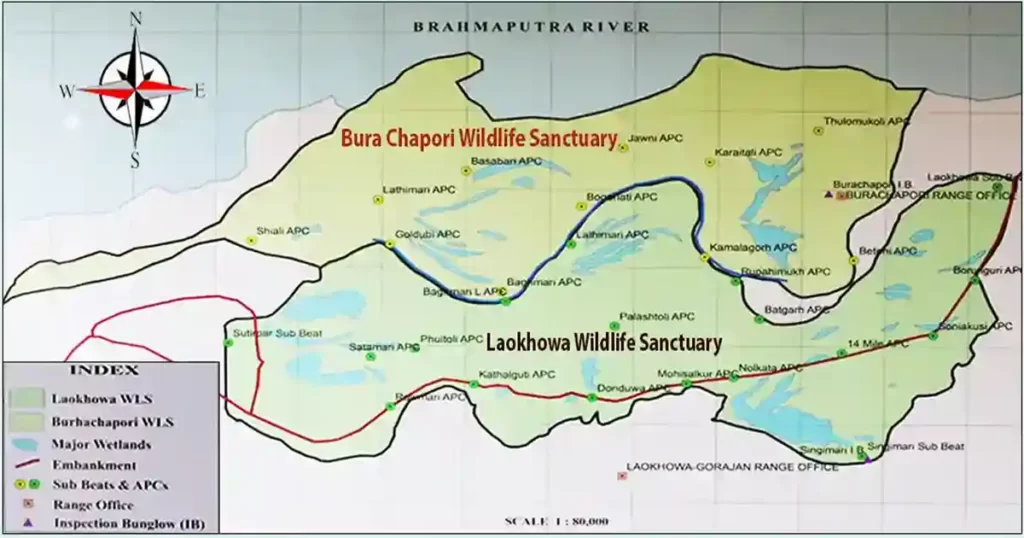
Conservation Timeline of Bura Chapori Wildlife Sanctuary
- 1974: Burhachapori was a Professional Grazing Reserve till 1974. It was declared a Reserved Forest in 1974 covering 44.06 sq. km under Dhania Sub-Beat, Tezpur, Darrang Division.
- 1987: Burhachapori Reserved Forest was brought under Western Assam Wildlife Division, Tezpur administration.
- 1989: Burha Chapori Reserved Forest was handed over to the administration of the newly created Nagaon Wildlife Division, Nagaon.
- 1992: The Burha Chapori Reserved Forest was handed back in 1992 to the Western Assam Wildlife Division, Tezpur.
- 1993: The Dhania Beat was upgraded to the status of Range.
- 1995: The Burha Chapori was upgraded to a Wildlife Sanctuary.
- 2007: Burhachapori Wildlife Sanctuary was brought under Nagaon Wildlife Division administrative control in August 2007.
- 2007: Declared as Tiger Reserve on 3rd August 2007 and falls under the buffers zone of the Kaziranga Tiger Reserve.

Bura Chapori Wildlife Sanctuary as a Wildlife Corridor
The Burachapori Wildlife Sanctuary located in the south bank of the Brahmaputra in Sonitpur district is a representative area of the Brahmaputra floodplain. The sanctuary is located between the Kaziranga National Park to its east, Laokhowa Wildlife Sanctuary to its south, Orang National Park to its west and the Brahmaputra River to its north.
The island of Brahmaputra River is an extensive riverine landscape covering over 1500 sq. km acts as an important corridor of wildlife movement between Kaziranga Tiger Reserve and Orang National Park along with Laokhowa – Burachapori Wildlife Sanctuary. Animals such as elephants, rhinos, tigers, wild water buffaloes and others take shelter in the river island of Brahmaputra and use them as a migratory corridor for movement within Kaziranga-Orang- Laokhowa- Burachpori landscape. The Gangetic River dolphins, hares, deer, turtles, snakes, migratory birds and vultures are sighted within this corridor.
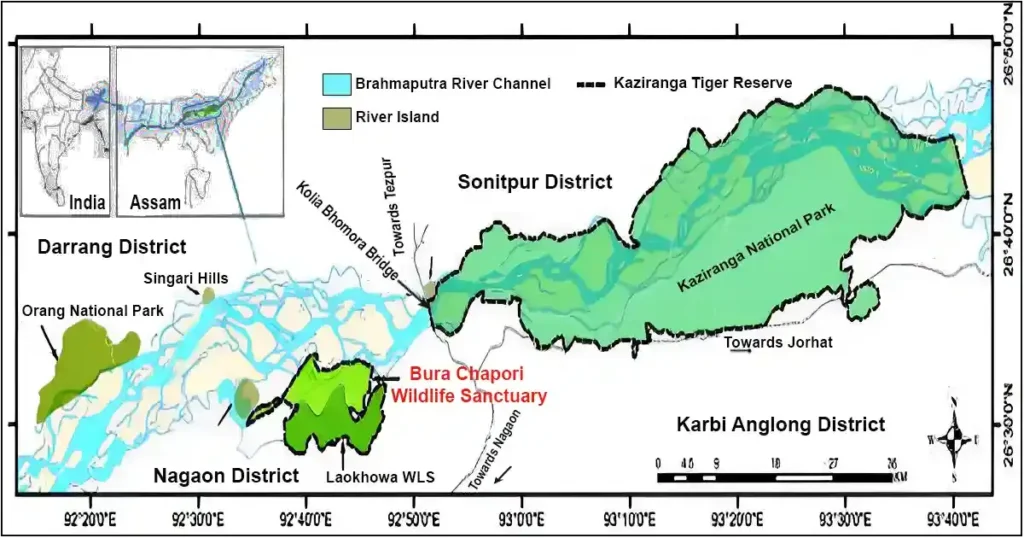
Geography of Bura Chapori Wildlife Sanctuary
Situated within the alluvial Brahmaputra Valley ecosystem, the geography of Bura Chapori Wildlife Sanctuary is primarily a floodplain with a unique combination of riparian forest types, grasslands, wetlands and woodlands and it is situated within the subtropical monsoon climate regime. The entire sanctuary comprises mostly flat terrain, adorned with nallas (streams) and beels (wetlands). The region gradually slopes from east to west and south to north. The elevation across the area varies from 35 to 60 meters above mean sea level. Most of the low-lying areas of the sanctuary are vulnerable to flood during summer. Annually, flooding submerges 50 to 70% of the sanctuary land mass depositing alluvial and sandy materials and creating multiple wetlands.

The climate of Bura Chapori Wildlife Sanctuary
The Bura Chapori Wildlife Sanctuary is deeply flooded during the monsoon period from May to September. The sanctuary remains dry in the winter period from mid-November to February. The annual temperature varied from maximum and minimum between 33°C and 16.7°C respectively. The annual total rainfall is 2,000 mm. Over 80 percent of the annual rainfall takes place during the monsoon. During winter occasional rains also occurred.
Due to frequent floods during monsoon, the Brahmaputra River’s course undergoes frequent changes leading to erosion along the northern side of the Burachapori Wildlife Sanctuary. This erosion has caused the formation of new chars (streams) within the boundaries of the protected area. The newly established chars exhibit prominent features such as short creeping grass and colonization by Tamarix dioica.
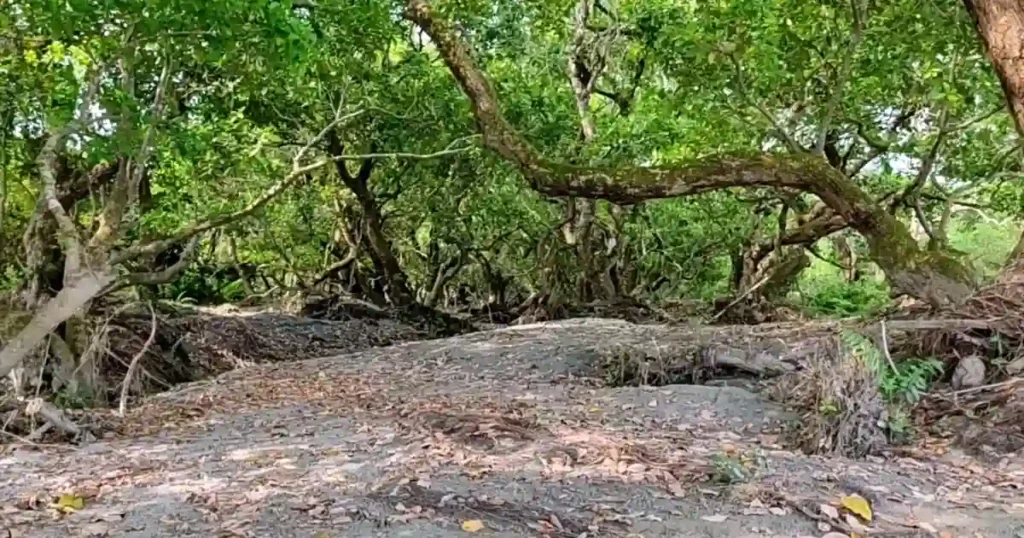
Ecosystem Diversity in the Sanctuary: Wildlife, Flora and Aquatic Plant Life
1. ) Wildlife of the Sanctuary: The Bura Chapori Wildlife Sanctuary is a habitat of a wide range of wild animals including majestic tigers, mighty elephants, robust wild buffalos, enigmatic one-horned rhinoceros, graceful hog deer and sturdy wild boar. The avian inhabitants also contribute to its rich biodiversity featuring species like the Bengal florican, black-necked stork, open-billed stork, white-eyed pochard, mallard, spotbill, large whistling teal and numerous others.
2.) Flora Dominating the Forest: Within the Bura Chapori Wildlife Sanctuary, the forested areas are characterized by dominant species such as Lagerstroemia spp., Bombax spp., Albizzia spp., Dalbergia sissoo, etc. and Zizyphus spp., among others and these plants play a vital role in shaping the ecosystem.
3.) Grasslands and Their Vegetation: The grasslands within the Burachapori Wildlife Sanctuary thrive with vegetation like Imperata spp., Cymbopogon spp., Alpinia spp., and these plant species contribute to the unique landscape and provide essential habitats for various wildlife.
4.) Aquatic Macrophytes and Wetland Plants: The aquatic environment of the Bura Chapori Wildlife Sanctuary showcases a variety of plant species that contribute to its wetland ecosystems. Among these are Euryale ferox, Nymphaea nouchali, Cyperus platystylis, Vallisneria spiralis, Nelumbo nucifera, Polygonum flaccidum, Scirpus eriophorum, Nechamandra alternifolia, Hydrilla verticillata, Nymphoides indicum, Pistia stratiotes, Echinochloa stagnina, Lemna minor and many more.
Bura Chapori Wildlife Sanctuary Photo: Avifauna
Best time to visit Bura Chapori Wildlife Sanctuary
The best time to visit Bura Chapori Wildlife Sanctuary is from November to March. During these months, the dry season makes comfortable weather with temperatures ranging from 17°C to 33°C. This period provides several advantages:
What to Expect to See:
1.) Bengal Florican: The sanctuary is renowned for being an ideal habitat for the elusive Bengal florican. If you visit during the breeding season, from late winter to early spring, you stand a better chance of witnessing these captivating birds and their intricate courtship displays.
2.) Migratory Birds: Bura Chapori is a paradise for migratory birds attracting species such as black-necked storks, mallards, openbill storks, teals, whistling ducks and numerous others. During the dry season the arrival of these migratory birds makes it an excellent time for birdwatchers to observe a vibrant avian spectacle.
3.) Mammals: The sanctuary is home to many mammals including the majestic Indian rhinoceros, elusive tigers, leopards, wild buffalos, hog deer and wild pigs. While sightings of these animals are possible year-round, the dry season increases the likelihood as many gather around the remaining water sources.
4.) Reptiles and Fish: Beyond the avian and mammalian wonders, Bura Chapori also hosts diverse reptile and fish species. Exploring the water bodies and lush vegetation may reveal intriguing aquatic and amphibious life.
5.) Occasional Elephant Herds: A special highlight of the sanctuary is the occasional appearance of elephant herds. These gentle giants while not guaranteed sightings can enhance the unique experience of visiting this remarkable wildlife haven.
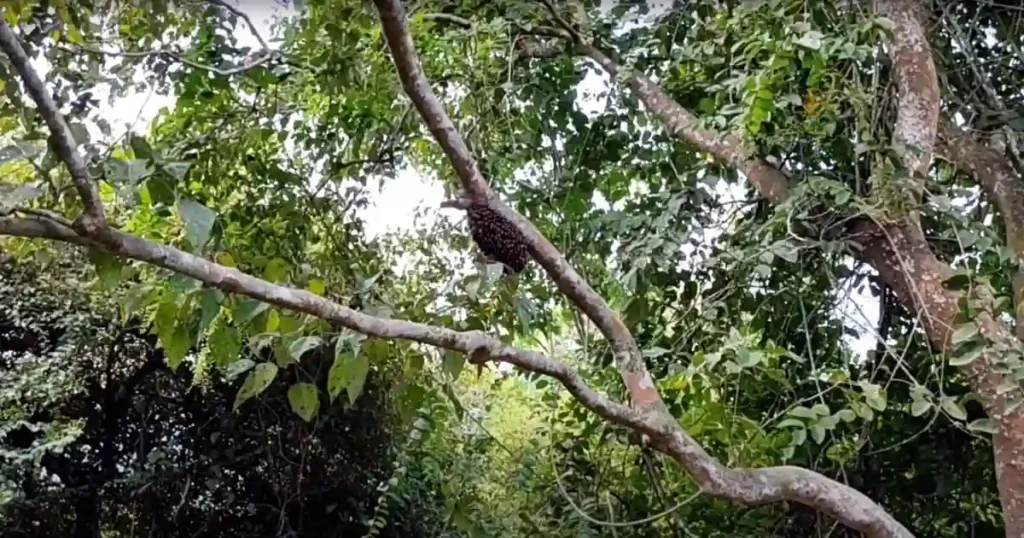
How to reach Bura Chapori Wildlife Sanctuary
Bura Chapori Wildlife Sanctuary can be accessed through various transportation modes.
By rail: The nearest railway station to Bura Chapori Wildlife Sanctuary is Rangapara North Junction located 60.2 kilometers away. You can reach it by taking the Thelamara – Bandarmari – Bindukuri – Khanamukh Road and then NH715 which usually takes around 1 hour and 45 minutes. The sanctuary is situated 153 kilometers away from Guwahati Railway Station and you can get there via NH27. The drive from Guwahati Railway Station to Bura Chapori Wildlife Sanctuary typically takes about 3 hours and 17 minutes.
By air: The nearest airport to Bura Chapori Wildlife Sanctuary is Tezpur Airport about 34.9 kilometers away. It’s reachable via NH715 and SH3 in around 53 minutes by car. Guwahati’s Lokpriya Gopinath Bordoloi International Airport is around 175 kilometers away via NH27 and the drive to the sanctuary takes about 3 hours and 55 minutes.
By road: Bura Chapori Wildlife Sanctuary is easily accessible through well-connected roadways with Tezpur serving as the primary gateway to the sanctuary. Tezpur offers excellent road links to major cities in Assam providing a convenient route to reach the sanctuary. Tezpur Airport is located approximately 34.9 kilometers away and can be reached via NH715 and SH3 with a travel time of around 53 minutes.
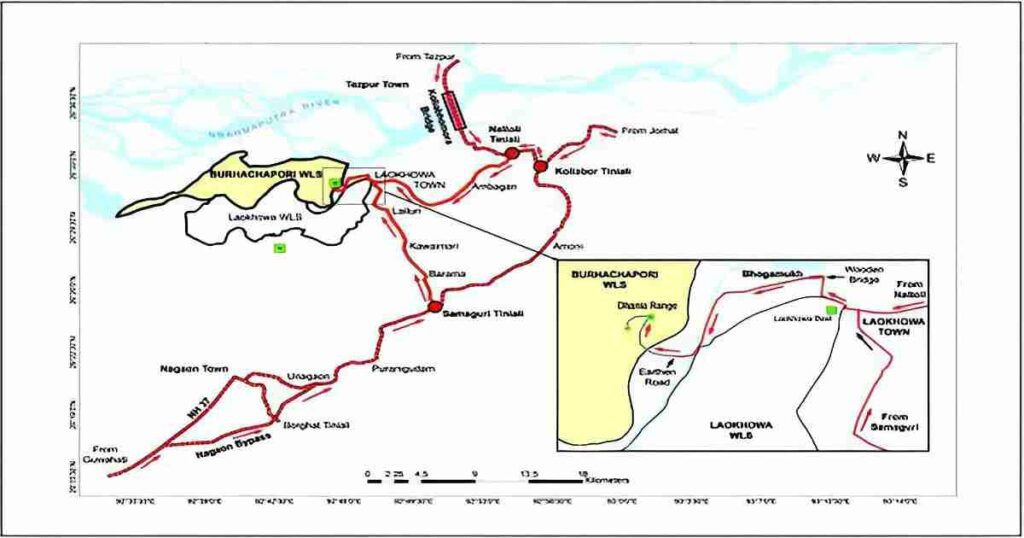
Where to Stay?
The Bura Chapori Wildlife Sanctuary has several Forest IBs (Inspection Bungalows) and Guest Houses primarily designated for the lodging of forest officers. Depending on availability, these accommodations might be extended to other individuals visiting the Bura Chapori Wildlife Sanctuary. There are also available hotels and guest houses in Tezpur which is 34.9 kilometers away from Bura Chapori Wildlife Sanctuary.
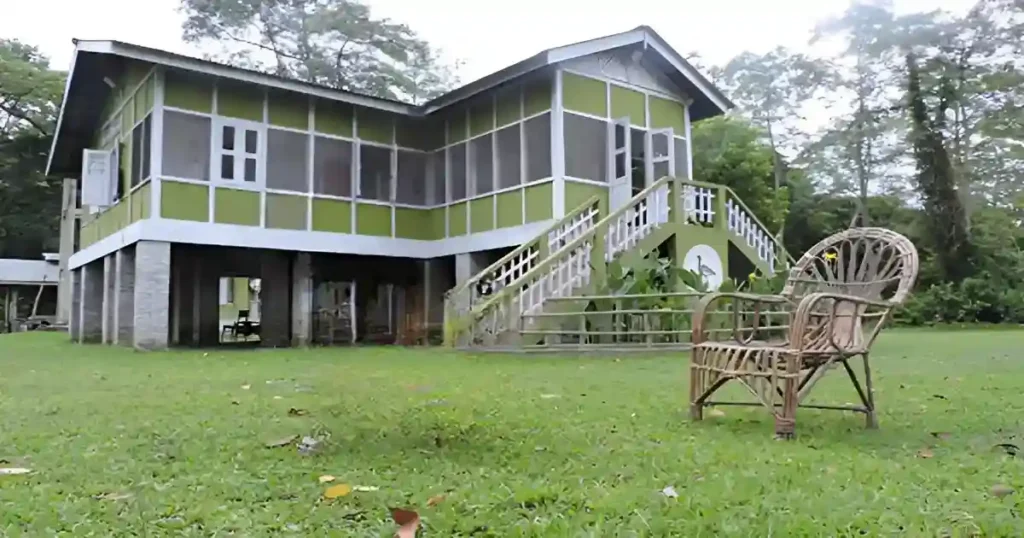
Conclusion
Covering a 44.06 sq. km expanse, Bura Chapori Wildlife Sanctuary in Assam, India, thrives as a haven for wildlife and avian species. The sanctuary is famous for its habitat of Bengal florican also home to many animals including rhinos, tigers, elephants and bird species. The optimal time to explore this rich biodiversity is from November to March when the dry season offers favorable conditions for wildlife viewing. The Bura Chapori Wildlife Sanctuary with its accessible trails and enchanting landscapes nestles as a true tributary to the natural beauty of Assam and the earnest conservation efforts put forth in the region.
FAQ
a.) In which district Bura Chapori Wildlife Sanctuary is situated?
Bura Chapori Wildlife Sanctuary is situated spreading across 44.06 sq. km on the south bank of the Brahmaputra River in Sonitpur district of Assan, India and falls under the buffers zone of the Kaziranga Tiger Reserve.
b.) What is Bura Chapori Wildlife Sanctuary famous for?
Bura Chapori Wildlife Sanctuary is famous for its habitat of the Bengal florican. It is a haven for many migratory birds including the Great Indian one-horned rhinoceros, tiger, leopard, wild buffalo, hog deer, wild pig, elephants and fish. Burachapori Wildlife Sanctuary was first declared as a Reserved Forest in 1974 and in 1995 it was declared as Bura Chapori Wildlife Sanctuary covering an area of 44.06 sq. km.
c.) Which is the first bird sanctuary in Assam?
Established in 1996 with an area of 33.93 km2 Pani Dihing Wildlife Sanctuary is the first bird sanctuary in Assam. It coordinates 27°7′19″N 94°35′47″E.
d.) What is the famous wildlife sanctuary of Assam?
The famous wildlife sanctuary of Assam includes Kaziranga, Manas, Pobitora, Nameri, and Dibru-Saikhowa among others. The protected areas of Assam include 7 national parks (2.51% area of Assam), 17 wildlife sanctuaries (1.88% area of Assam and 2 proposed wildlife sanctuaries.
You May Also Like
• Bornadi Wildlife Sanctuary
• Garampani Wildlife Sanctuary
• Dibang Wildlife Sanctuary
• Laokhowa Wildlife Sanctuary
• Raimona National Park
References
- Human-induced Land Use/Land-cover Change and Bioresource Management in Bura Chapori Wildlife Sanctuary in North-East India. D. Balasubramanian, K. Arunachalam and A. Arunachalam
https://www.researchgate.net/publication/326762939_Human-induced_Land_UseLand-cover_Change_and_Bioresource_Management_in_Bura_Chapori_Wildlife_Sanctuary_in_North-East_India - Bura Chapori Wildlife Sanctuary | Government Of Assam, India
https://nagaon.assam.gov.in/tourist-place-detail/251 - Bura Chapori Wildlife Sanctuary
https://en.wikipedia.org/wiki/Bura_Chapori_Wildlife_Sanctuary - Burachapori Wildlife Sanctuary – Assaminfo.com
http://www.assaminfo.com/tourist-places/18/burachapori-wildlife-sanctuary.htm - Burachapori Wildlife Sanctuary
https://forest.assam.gov.in/portlets/wildlife-sanctuary#Burachapori - Wonder Island BURHACHAPORI
https://asbb.gov.in/booklets/Wonder-Island-Burhachapori.pdf


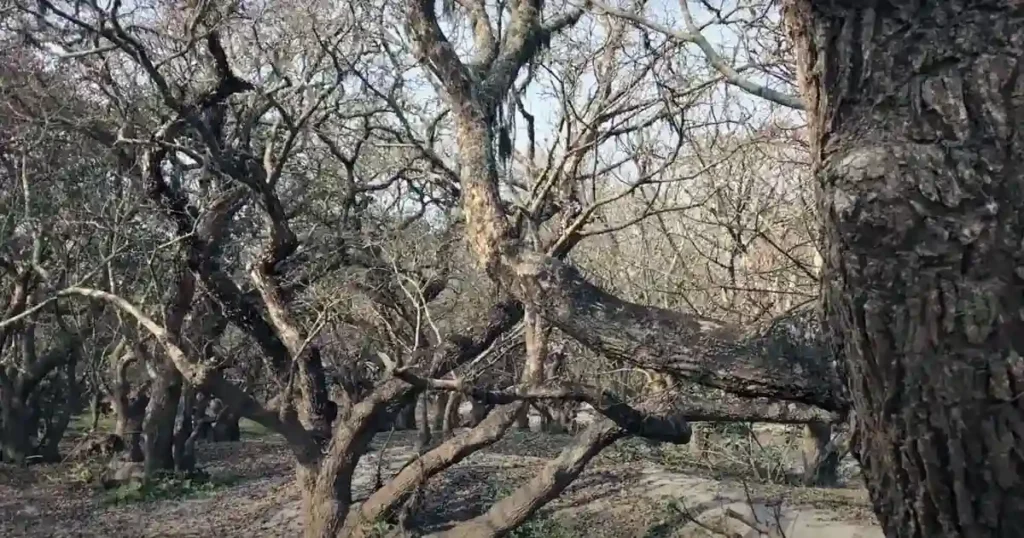
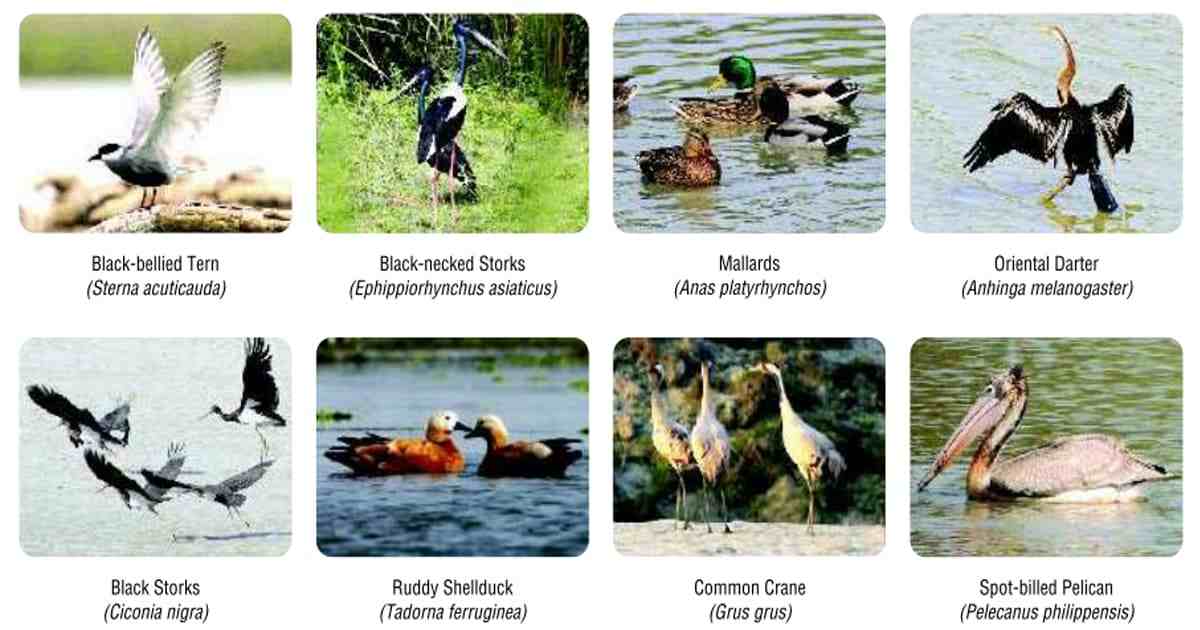

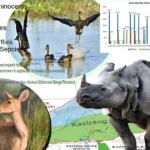
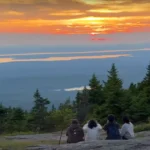
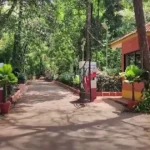
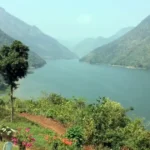


2 thoughts on “Bura Chapori Wildlife Sanctuary”